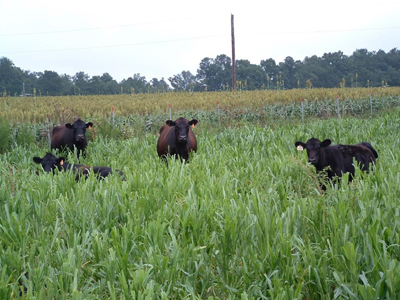5585 Guilford Road • Madison, WI 53711-5801 • 608-273-8080 • Fax 608-273-2021
www.agronomy.org
Twitter | Facebook
NEWS RELEASE
Contact: Hanna Jeske, Associate Director of Marketing and Brand Strategy, 608-268-3972, hjeske@sciencesocieties.org
Crops and livestock on the same farms, the same fields–why?
July 23, 2018 – Traditionally, farms included a variety of grazing animals, pastures, and crops. Mechanization and other factors prompted many farms to adopt more efficient systems. The July 22nd Sustainable, Secure Food blog explains why the traditional approach to variety in agriculture is getting a second look.
 Integrated agricultural systems—using farmland for a variety of purposes—made sense for farmers whose distribution was limited to the local area. Alan Franzluebbers, USDA–Agricultural Research Service, Raleigh, NC, says it can make sense again.
Integrated agricultural systems—using farmland for a variety of purposes—made sense for farmers whose distribution was limited to the local area. Alan Franzluebbers, USDA–Agricultural Research Service, Raleigh, NC, says it can make sense again.
“Interest in re-integrating farms to take advantage of the synergies between crops and livestock has increased in the past few decades,” he says. “Farmers can match the energy and nutrient flows of different enterprises (i.e. types of livestock and types of crops) to meet the desired outcomes.”
Integrated systems have several benefits:
- Nutrient-rich animal manures can reduce the need for chemical fertilizers.
- Forage and grazing land can improve soil health by returning carbon and, in the case of forage legumes, valued nitrogen to the soil.
- Pastures can moderate the effects of drought and flood, due to their deeper roots and variety of plants in them.
- Crops grown in rotation with forages can be more profitable, with a lower fertilizer cost.
- The diversity of income reduces the overall financial risk to the grower.
“Diverse agricultural systems that include livestock, perennial grasses and legumes, and a wide variety of annual forages offer enhanced agro-ecosystem resilience in the face of uncertain climate and market conditions,” Franzluebbers says.
To read the complete blog, visit Sustainable, Secure Food at https://wp.me/p9gkW1-2z.